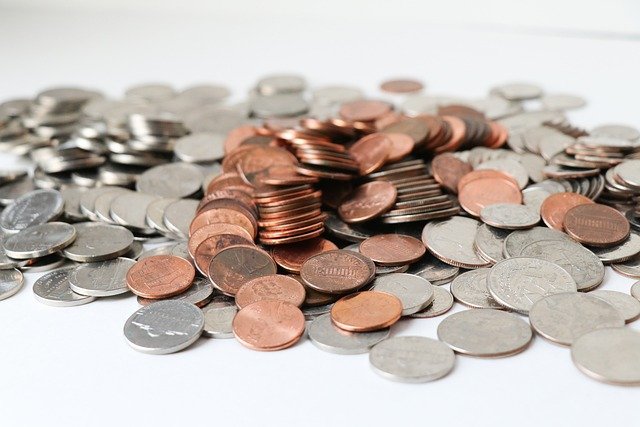# Everyday Savings Secrets: Simple Strategies to Cut Costs on Essential Items and Boost Your Budget
In today’s fast-paced world, managing a household budget can feel like a daunting task. With rising prices on groceries, household items, and daily necessities, it’s essential to find effective ways to cut costs without sacrificing quality. Fortunately, there are practical strategies that anyone can implement to save money on essential items. In this article, we’ll explore everyday savings secrets, focusing on the power of coupons and bulk-buying tips that can help you boost your budget.
## Understanding Your Needs
Before diving into specific saving strategies, it’s important to assess your needs. Take a moment to track your spending habits for a month. Identify which items are essential and which are discretionary. This will help you prioritize your savings efforts and focus on areas where you can make the most significant impact.
## 1. Mastering the Art of Couponing
### a. Start Small
If you’re new to couponing, start small. Gather a few coupons for items you already buy. This will make the process less overwhelming and more manageable. You can find coupons in newspapers, online coupon sites, and through store loyalty programs.
### b. Use Digital Coupons
Many grocery stores and retailers now offer digital coupons that can be loaded onto your loyalty card or app. This allows you to save without the hassle of clipping paper coupons. Check your favorite store’s app regularly for new deals.
### c. Combine Coupons with Sales
One of the best ways to maximize your savings is to combine coupons with sales. Keep an eye on weekly ads and plan your shopping trips around sales events. For example, if a store is offering a discount on a product you have a coupon for, you can significantly reduce the price.
### d. Join Cashback and Reward Programs
Consider joining cashback apps and websites that allow you to earn money back on purchases. Many of these programs also offer additional coupons and deals. By combining these offers with your regular shopping, you can increase your savings even further.
## 2. Bulk Buying: A Smart Strategy
### a. Identify Bulk-Worthy Items
Not everything is cheaper in bulk, so it’s crucial to identify which items are worth buying in larger quantities. Non-perishable goods like canned foods, pasta, rice, and toiletries are excellent candidates. You can also consider buying perishables like meat and dairy in bulk if you have the means to store them properly.
### b. Compare Unit Prices
When shopping, always compare unit prices. This is the price per ounce, pound, or item, which can help you determine if buying in bulk is truly a better deal. Sometimes, larger packages may not offer significant savings compared to smaller ones, especially if you won’t use the product before it expires.
### c. Share Bulk Purchases
If you have friends or family members who are also interested in saving money, consider pooling your resources for bulk purchases. This way, you can split the cost and share the items, ensuring that nothing goes to waste.
### d. Stock Up During Sales
Take advantage of sales events to stock up on bulk items. If your favorite grocery store has a sale on canned goods or cleaning supplies, buy enough to last until the next sale. This strategy not only saves money but also ensures you won’t run out of essential items unexpectedly.
## 3. Smart Strategies for Grocery Shopping
### a. Create a Shopping List
Before heading to the store, create a shopping list based on your meal plan for the week. Sticking to a list helps you avoid impulse purchases and ensures you only buy what you need.
### b. Plan Your Meals
Meal planning is a powerful tool for saving money. By planning your meals around what’s on sale, you can create a budget-friendly menu that minimizes waste and maximizes savings. Look for recipes that use similar ingredients to make the most of your purchases.
### c. Buy Seasonal Produce
Fruits and vegetables are often cheaper when they are in season. Visit local farmers’ markets or check your grocery store for seasonal produce sales. Not only will you save money, but you’ll also enjoy fresher and tastier options.
### d. Avoid Pre-Packaged Foods
Pre-packaged and convenience foods tend to be more expensive than their whole counterparts. Instead of buying pre-cut vegetables or frozen meals, consider preparing your meals from scratch. This not only saves money but is often healthier as well.
## 4. Household Items and Daily Needs
### a. DIY Cleaning Products
Many household cleaning products can be made at home using simple ingredients like vinegar, baking soda, and lemon. Not only are these DIY solutions often more effective, but they are also significantly cheaper than store-bought alternatives.
### b. Use Reusable Items
Invest in reusable items such as cloth napkins, shopping bags, and water bottles. While there may be an upfront cost, these items will save you money over time and reduce waste.
### c. Buy Generic Brands
Generic or store-brand products often offer the same quality as name-brand items at a fraction of the cost. Don’t be afraid to try these alternatives; you may find that you prefer them!
### d. Take Advantage of Loyalty Programs
Many stores offer loyalty programs that provide discounts, exclusive offers, and points for future purchases. Sign up for these programs to take advantage of additional savings.
## Conclusion
Cutting costs on essential items doesn’t have to be a daunting task. By mastering the art of couponing, embracing bulk buying, and implementing smart shopping strategies, you can significantly boost your budget. Remember to assess your needs, plan your purchases, and take advantage of available resources. With these everyday savings secrets, you can enjoy a more financially stable lifestyle while still meeting your household needs. Start today, and watch your savings grow!










